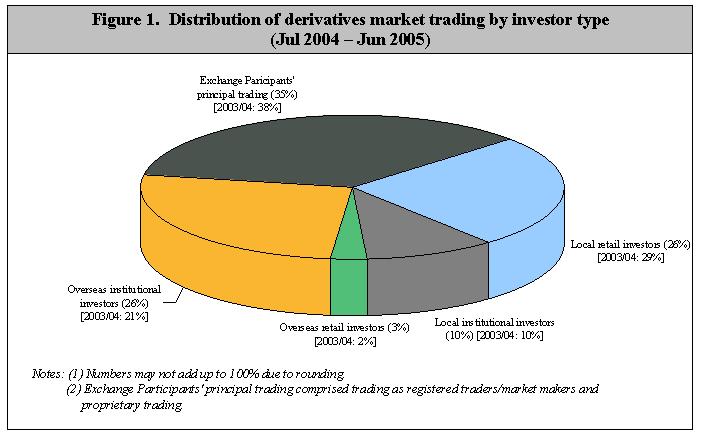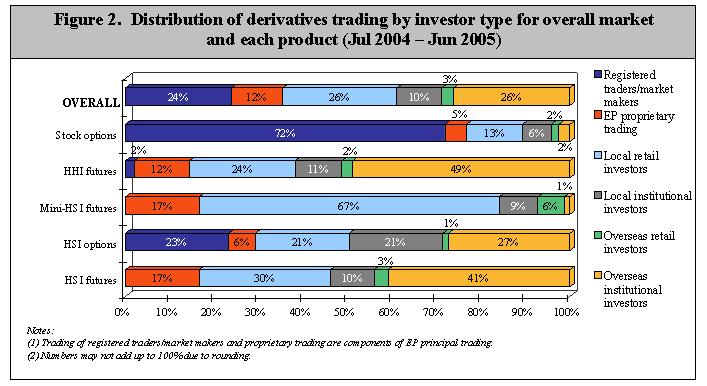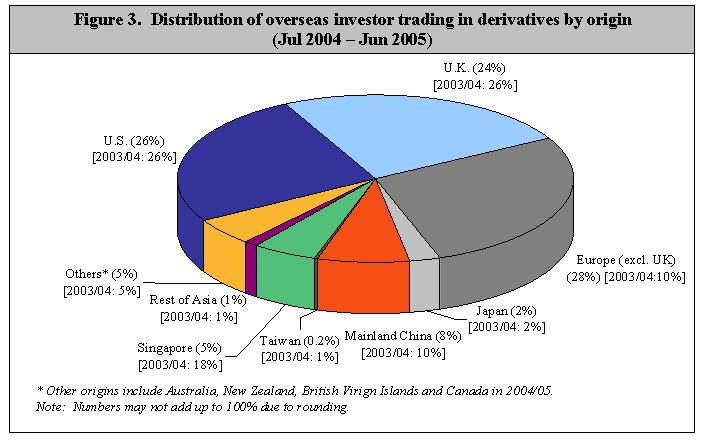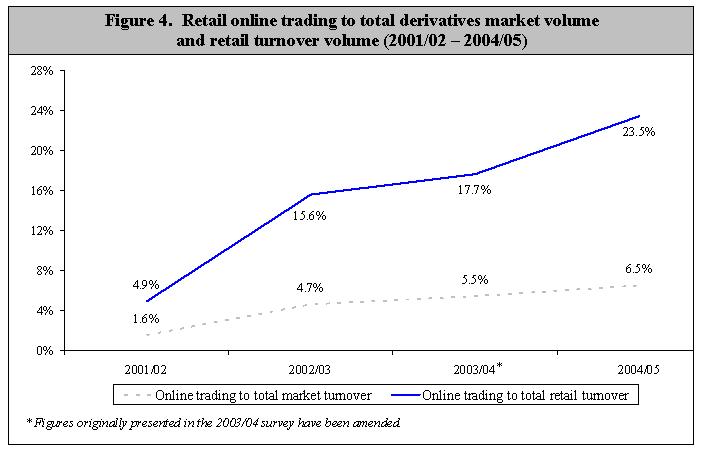|
Hong Kong Exchanges and Clearing Limited's (HKEx) derivatives market gets support from a diverse investor base, according to the Derivatives Market Transaction Survey 2004/05.
Overall, retail investors contributed 28.3 per cent (local: 25.7 per cent; overseas: 2.6 per cent) to total derivatives contract volume (vs 31.4 per cent in 2003/04), institutional investors 36.3 per cent (local: 10.1 per cent; overseas: 26.2 per cent) (vs 30.8 per cent in 2003/04) and Exchange Participants' principal trading 35.4 per cent (vs 37.7 per cent in 2003/04), the survey revealed.
Different products attracted a different investor mix. Overseas institutional investors were the major contributor to trading in Hang Seng Index (HSI) futures (40.9 per cent) and H-shares Index futures (HHI) (48.8 per cent). For HSI options, the contributions from overseas institutional investors (27.4 per cent), local retail and institutions (21.1 per cent each) were significant. For Mini-HSI futures, local retail investors was the dominant participant type (contributing 67.5 per cent of product turnover). Most turnover in the stock options market was Exchange Participants' principal trading (76.8 per cent).
Local investor trading contributed 35.8 per cent to overall market turnover in 2004/05 - 25.7 per cent from retail investors and 10.1 per cent from institutional investors. The overall contribution from overseas investors (mainly institutions) was 28.8 per cent, the highest in the past five years. Among overseas investors, the largest contributors were investors from Europe (excluding the UK), with 27.9 per cent of overseas investor trading in 2004/05. They were followed by investors from the US and the UK, contributing 25.9 per cent and 24.3 per cent of overseas investor trading respectively.
Pure trading remained the main transaction purpose of derivatives trading, accounting for half of the total market turnover (vs 54.0 per cent in 2003/04). The proportion of turnover for hedging was 36.0 per cent (vs 32.0 per cent in 2003/04), and the remaining 13.9 per cent was turnover for arbitrage (almost the same as in 2003/04).
Retail online trading contributed 23.5 per cent of retail investor trading in 2004/05, an increase from 17.7 per cent in 2003/04. Its contribution to total market turnover was 6.5 per cent, compared with 5.5 per cent in 2003/04.
Gerald Greiner, Deputy Chief Operating Officer & Head of Exchange at HKEx, said, "we are pleased to see a balanced mix of investors in these products. This helps the growth of liquidity in our derivatives market."
The Derivatives Market Transaction Survey has been conducted annually along similar lines since 1994 (by HKEx or the Hong Kong Futures Exchange, which is now a wholly-owned subsidiary of HKEx). This year's survey covered HSI futures, HSI options, Mini-HSI futures, HHI futures and stock options, which accounted for about 99 per cent of the total turnover volume of the HKEx derivatives market during the study period (July 2004 - June 2005). The survey achieved an overall response rate of 92 per cent, the respondents contributing 99 per cent of the total turnover volume during the study period.
The full report on the HKEx Derivatives Market Transaction Survey 2004/05 is available on the HKEx website (http://www.hkex.com.hk/).




|